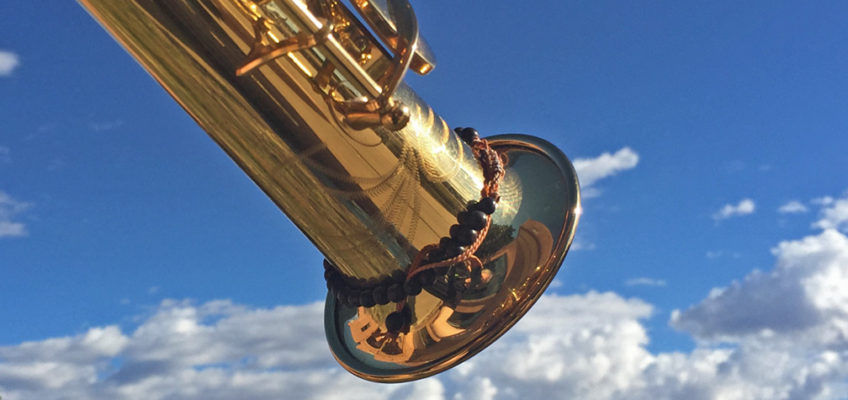After playing my P. Mauriat soprano for about 18 months, I began wondering if I wasn’t missing something by having one of the more prestigious and pricy instruments I’d seen advertised. I specifically wondered whether a better instrument might offer better pitch, sound, and key feel. Since I was putting in 4 – 5 hours of practice time a day, I justified the idea of spending more money and upgrading my soprano sax. I do love shopping, and revisiting buying a soprano saxophone was such a tempting idea. So, I started looking into buying a new instrument in earnest.
I live in a small town, so there’s no opportunity to walk into a music store and try out sopranos. In fact, there are very few stores in even large cities that stock enough sopranos to try out more than one or two. The NAMM show is one possibility, because most everything on the market is right there. But I wasn’t crazy about that particular setting for trying out saxes — too hectic and crowded for my delicate sensibilities!
But I do love to shop for equipment, so I began by spending hours poring over everything I could find online.
Curved or Straight?
I had been able to try out a friend’s curved Yanagisawa soprano sax, and determined that a curvy soprano wasn’t for me. Too much of the bell sound coming back into my face. I prefer to hear the sound of the sax coming back at me from the room by way of all the holes in the sax tube, as we do with a straight soprano.
I also wanted to sort out whether I might want an instrument with a curved neck, or with two necks – one curved and one straight. Otherwise, a typical one-piece straight neck sax would suffice.
Tonal Differences
And then there was the question of the instrument tone, since different manufacturers make horns with different sounds, due to the shape and size of the bore and the materials used. Looking into the information available, I got the general idea that there were a few basic categories of soprano sounds:
- Selmer horns tend to have a tightly focused tone.
- Yamaha and Yanagisawa horns have a less focused tone with a more complex body of sound around the central focus.
- A few manufacturers make their saxes with a bigger bore for a generally bigger sound.
All of which is a fairly vague and unsatisfying account of things, without actually playing and hearing the horns themselves.
However, I did as much home based research as I could about buying a soprano saxophone, including watching every Youtube soprano sax demo I could find. Unfortunately, recordings are only slightly more helpful than the written descriptions, because there are so many variables. Mouthpiece, reed, player, and mic setup, and of course one’s playback system itself can all drastically effect the sound and make it impossible to do any kind of reliable comparison. But of all the videos I saw, I’d have to say that the ones done by Jim Cheek at Sax.co are the most consistent and informative. (And persuasive. That guy can sure sell saxes!)
Narrowing it Down
A few other factors besides sound figured into my shopping decision. Price was certainly a factor. Popularity was an issue, because if I decided to sell the horn a year later, I didn’t want something so obscure that there would be little market for it. A poor reliability reputation eliminated one European maker. And I decided to avoid the Chinese knock-off products. Those tempted me for a while because they are fantastically inexpensive, and from some accounts some seem to be of high quality. But ultimately I couldn’t get past the moral factor of buying a soprano saxophone that was made from an essentially stolen design.
After plenty of obsessive deliberation, I narrowed my choice down to three general possibilities:
- Yanagisawa SWO series
- Yamaha Custom Z or EX series
- Selmer Series III
I also knew that if I were to go in the Selmer direction, I’d be buying used, because they’re way more expensive than the Japanese options. I had already eliminated the idea of going with an old Selmer Mark VI, or any of the other old style horns. Nothing against the ever popular Mark VI (except perhaps the inflated prices), but I wanted the modern keywork and improved pitch accuracy of a new horn, and the assurance and reliability of something new.
Next, getting down to business.


